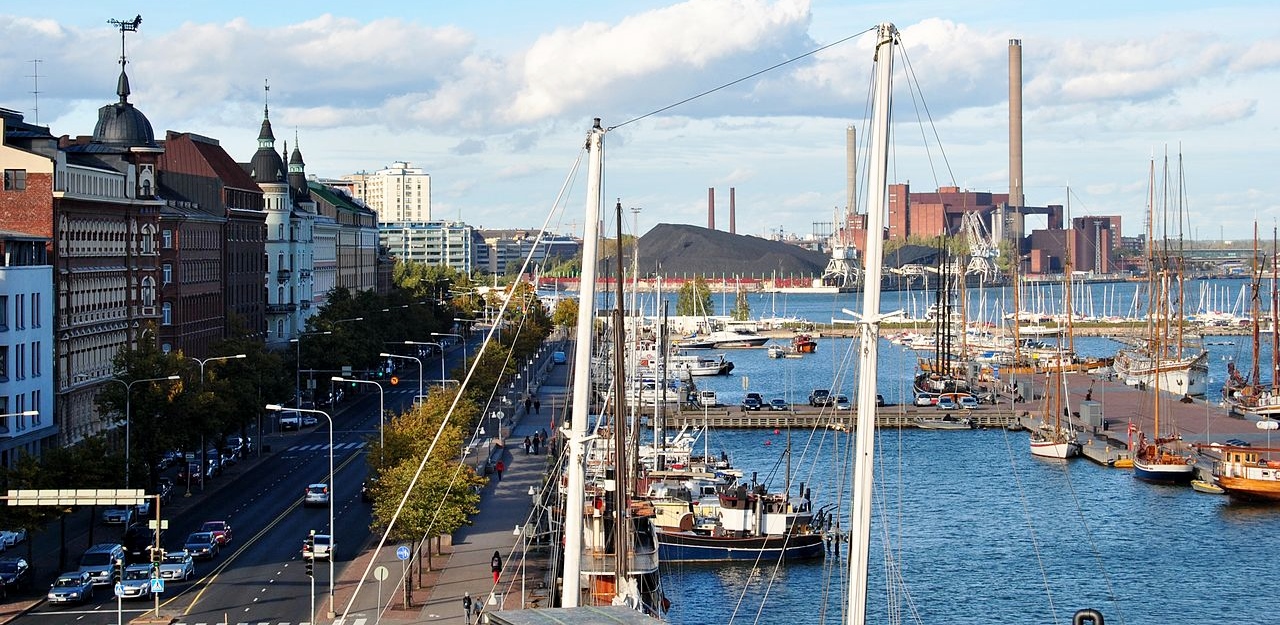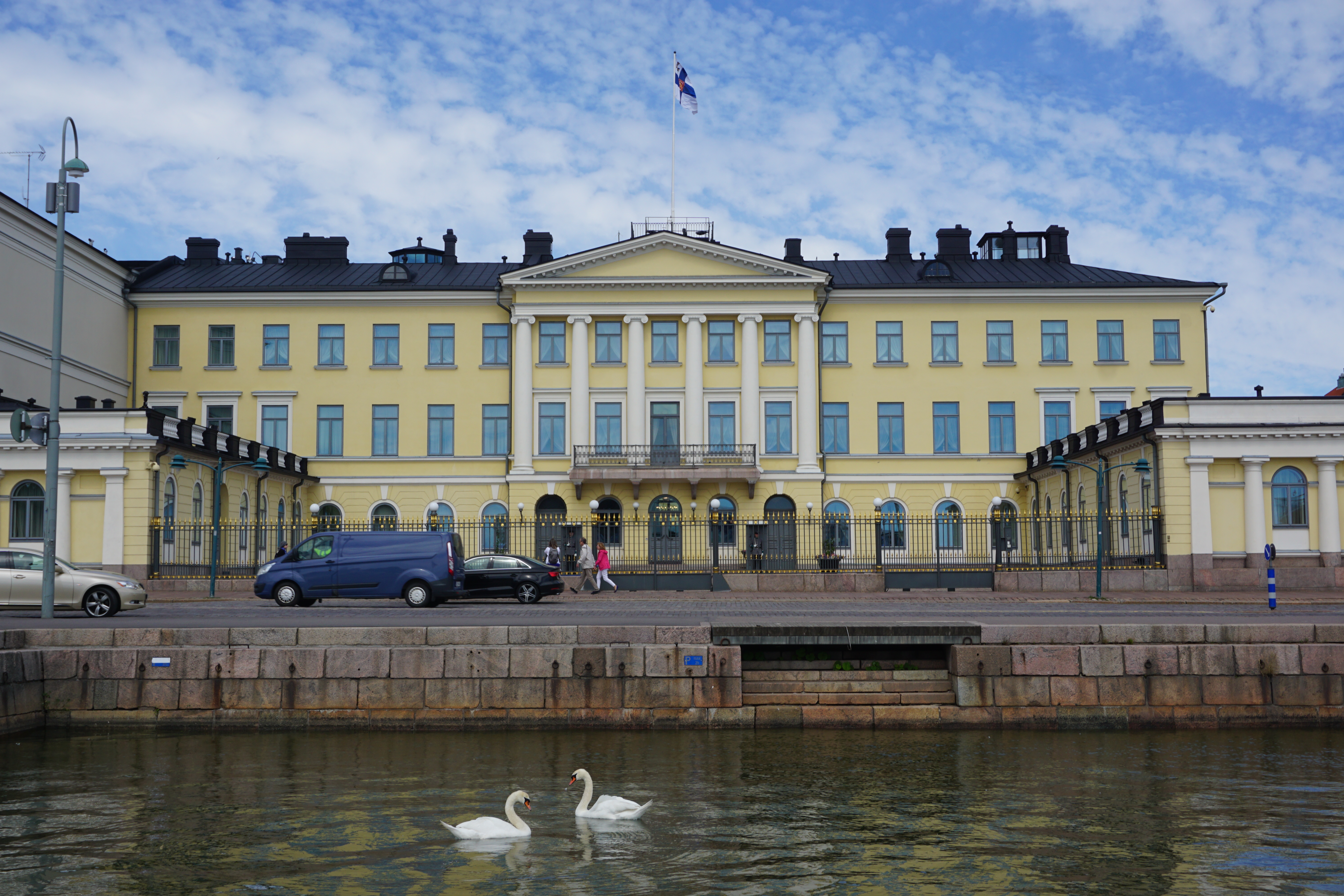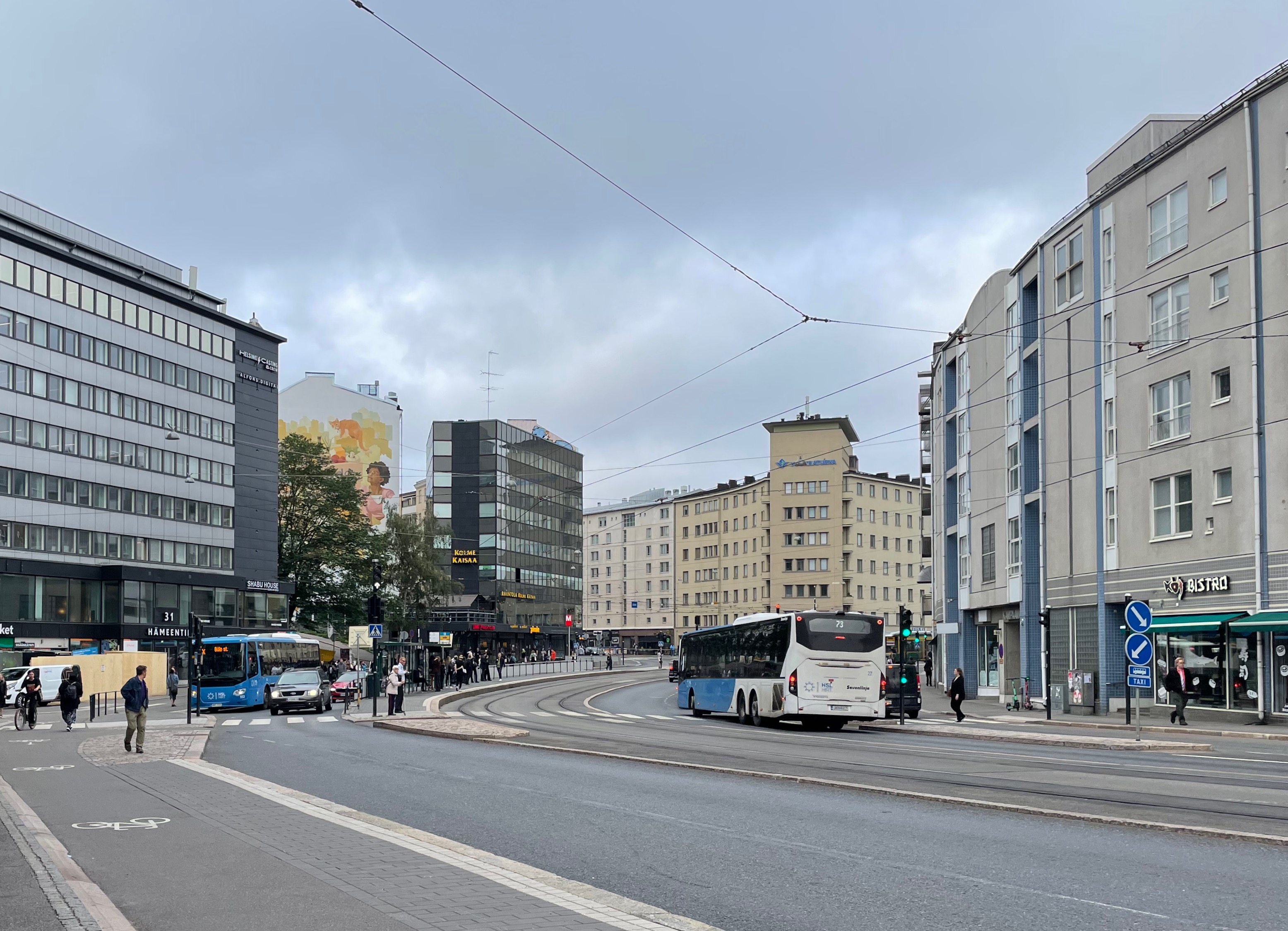|
Kruununhaka
Kruununhaka (; ) is a Subdivisions of Helsinki#Neighbourhoods, neighbourhood of Helsinki, the capital of Finland. Kruununhaka became the area next to the harbour and the center, when Helsinki was moved from the earlier location in the mid-1660s. From the very beginning, the residents included city and state officials. Many buildings of the University of Helsinki are also situated in Kruununhaka. The area has become known for its vintage shops. Notable people *Kirka Babitzin, singer *Harri Holkeri, politician *Magnus Lindberg, composer *Johannes Virolainen, politician *Bror-Erik Wallenius, sports commentator *Valtteri Bottas, racing driver Gallery Image:Helsinki Cathedral in July 2004.jpg, Helsinki Cathedral Image:Presidentinlinna.jpg, Presidential Palace, Helsinki, Presidential Palace Image:Collegium of Advanced Studies, University of Helsinki.JPG, Aleksanteri Institute Image:Kruununhaka-Helsinki-As-Seen-From-Katajanokka.JPG, Pohjoisranta waterfront in Kruununhaka as seen f ... [...More Info...] [...Related Items...] OR: [Wikipedia] [Google] [Baidu] |
Pohjoisranta
Pohjoisranta (Swedish language, Swedish: ''Norra Kajen''), meaning "northern shore", is the eastern shore of the district of Kruununhaka in Helsinki, Finland and a street running along it. Description and history Pohjoisranta is known for the Halkolaituri (''Vedkajen'', "firewood pier") pier which nowadays serves as a home for historical wooden ships. The pier got its name when the entire Pohjoisranta pier still was an import harbour for wood. The entire port of Helsinki was located in Pohjoisranta in the 17th and 18th centuries. Pohjoisranta also has a causeway connection to the outdoor island of Tervasaari. Pohjoisranta is surrounded by valuable buildings designed by Onni Tarjanne, Lars Sonck and Theodor Höijer. After the Hakaniemi bridge leading from Pohjoisranta to Sörnäisten rantatie was built in 1961 Pohjoisranta became an important traffic connection. Together with Esplanadi and Sörnäisten rantatie it forms a part of the connection from the city centre to the Lahde ... [...More Info...] [...Related Items...] OR: [Wikipedia] [Google] [Baidu] |
Helsinki Cathedral
Helsinki Cathedral (, ; , ) is the Finnish Evangelical Lutheran cathedral of the Diocese of Helsinki, located in the neighborhood of Kruununhaka in the centre of Helsinki, Finland, at the Senate Square. The church was originally built from 1830 to 1852 as a tribute to the Grand Duke of Finland, Emperor Nicholas I of Russia. It was also known as St Nicholas's Church (, ) until Finland declared its full independence in 1917. It is a major landmark of the city, and one of the most famous historical structures in Finland as a whole when viewed globally. Description A distinctive landmark in the Helsinki cityscape, with its tall, green dome surrounded by four smaller domes, the building is in the neoclassical style. It was designed by Carl Ludvig Engel as the climax of his Senate Square layout: it is surrounded by other, smaller buildings designed by him. The church's plan is a Greek cross (a square centre and four equilateral arms), symmetrical in each of the four cardinal ... [...More Info...] [...Related Items...] OR: [Wikipedia] [Google] [Baidu] |
Helsinki
Helsinki () is the Capital city, capital and most populous List of cities and towns in Finland, city in Finland. It is on the shore of the Gulf of Finland and is the seat of southern Finland's Uusimaa region. About people live in the municipality, with million in the Helsinki capital region, capital region and million in the Helsinki metropolitan area, metropolitan area. As the most populous List of urban areas in Finland by population, urban area in Finland, it is the country's most significant centre for politics, education, finance, culture, and research. Helsinki is north of Tallinn, Estonia, east of Stockholm, Sweden, and west of Saint Petersburg, Russia. Helsinki has significant History of Helsinki, historical connections with these three cities. Together with the cities of Espoo, Vantaa and Kauniainen—and surrounding commuter towns, including the neighbouring municipality of Sipoo to the east—Helsinki forms a Helsinki metropolitan area, metropolitan are ... [...More Info...] [...Related Items...] OR: [Wikipedia] [Google] [Baidu] |
Presidential Palace, Helsinki
The Presidential Palace (, ) is one of the three official residences of the President of Finland, president of the Republic of Finland. It is situated in Helsinki, on the north side of Esplanadi, overlooking Market Square, Helsinki, Market Square. Origins and early history At the beginning of the 19th century, a salt storehouse stood on the site. , then one of the elite of Helsinki's merchants, purchased the entire lot and erected between 1816 and 1820 a stately residence designed by architect . The Heidenstrauch House resembled a palace more than a merchant's house. In 1837 it actually became a palace when it was purchased for the price of 170 000 rubles to be converted into a residence for the Governor-General of Finland. However, Nicholas I of Russia, Nicholas I desired that it should become the official residence in Helsinki of the Emperor of All Russia, Emperor of Russia, the Grand Duke of Finland, and so the building became the ''Imperial Palace in Helsinki''. The necessary r ... [...More Info...] [...Related Items...] OR: [Wikipedia] [Google] [Baidu] |
Kluuvi
Kluuvi (; ) is the commercial centre of Helsinki, Finland, and a neighbourhood in the Vironniemi district of Helsinki. The Helsinki Central railway station, Hotel Kämp and Hotel Arthur, the Helsinki main post office, the Stockmann and Sokos department stores, the Kluuvi shopping centre and the main offices of Finnish banks are located in Kluuvi. Kluuvi includes the central campus of the University of Helsinki, the Ateneum art museum, and the movie theatres Maxim, Kinopalatsi and Bristol. The northeastern part of Kluuvi, which includes the Kaisaniemi park, is commonly called Kaisaniemi, but it is not the official name of any neighbourhood in Helsinki. The neighbourhood is home to 23,000 jobs and several hundred inhabitants. The official name of the neighbourhood is very seldom used in everyday speech, Helsinkians usually refer to the area as "the centre" (''keskusta'') or "the core centre" (''ydinkeskusta''). History The Finnish word ''kluuvi'' and the Swedish word ''glo' ... [...More Info...] [...Related Items...] OR: [Wikipedia] [Google] [Baidu] |
Kaartinkaupunki
Kaartinkaupunki (, ) is a neighbourhood in the southern part of Helsinki, Finland Finland, officially the Republic of Finland, is a Nordic country in Northern Europe. It borders Sweden to the northwest, Norway to the north, and Russia to the east, with the Gulf of Bothnia to the west and the Gulf of Finland to the south, .... Kaartinkaupunki consists of the area between the Esplanadi park and the Tähtitornin vuori park. Its area was first confirmed in 1812, but the neighbourhood was only named in 1959. It is neighbourhood number 3 in Helsinki, belonging to the Ullanlinna district and to the Southern main district. Kaartinkaupunki was named after the old Russian army barracks located near . The oldest part of the barracks was built in 1822. It was originally built as a residence for the Helsinki training battalion, which later became the Guard of Finland. The neighbourhood has a land area of . In 2005, it had a population of 881, and in late 2003, it had 11,001 jo ... [...More Info...] [...Related Items...] OR: [Wikipedia] [Google] [Baidu] |
University Of Helsinki
The University of Helsinki (, ; UH) is a public university in Helsinki, Finland. The university was founded in Turku in 1640 as the Royal Academy of Åbo under the Swedish Empire, and moved to Helsinki in 1828 under the sponsorship of Alexander I of Russia, Tsar Alexander I. The University of Helsinki is the oldest and largest university in Finland with a range of disciplines available. In 2022, around 31,000 students were enrolled in the degree programs of the university spread across 11 faculties and 11 research institutes. As of 1 August 2005, the university complies with the harmonized structure of the Europe-wide Bologna Process and offers bachelor, master, licenciate, and Doctorate, doctoral degrees. Admission to degree programmes is usually determined by entrance examinations, in the case of bachelor's degrees, and by prior degree results, in the case of master and postgraduate degrees. The university is bilingual, with teaching by law provided both in Finnish and Swedi ... [...More Info...] [...Related Items...] OR: [Wikipedia] [Google] [Baidu] |
Sörnäinen
Sörnäinen (; ''Sörkkä'' or ''Sörkka'' in Helsinki slang) is a Subdivisions of Helsinki#Neighbourhoods, neighbourhood in the city of Helsinki, Finland. Sörnäinen is located a little more than one kilometre north from the coastal centre of Helsinki, near the district of Hakaniemi. The east side of Sörnäinen borders the sea. Sörnäinen used to be primarily an industrial district with many shipping companies and warehouses, however, nowadays it is a thriving urban area divided into four districts: Vilhonvuori, Kalasatama, Sompasaari and Hanasaari. It also has two metro stations: Sörnäinen metro station and Kalasatama metro station in the Kalasatama quarter. The headquarters of Senate Properties (''Senaatti-kiinteistöt'') is located in Sörnäinen. Also the Helsinki Prison is located there. Etymology The name "Sörnäinen" comes from the Swedish name "''Södernäs''" ("Southern cape") and was first mentioned in the foundation document for the New Helsinki in 1639, a ... [...More Info...] [...Related Items...] OR: [Wikipedia] [Google] [Baidu] |
Vironniemi
Vironniemi (; literally the "Cape of Estonia" or the "Estonian Peninsula"Katajannokan historia – Vihreät sylit (in Finnish)) is a of , , forming the core part of the city centre, thus also the central location of the Finnish governmental and financial decision making, and the location of Helsinki's most important |
Bror-Erik Wallenius
Bror-Erik "Bubi" Wallenius (born 1943) is a retired Finland, Finnish sports commentator who still occasionally works for Finland's National Broadcasting Company YLE. Wallenius had a great passion for sports since his childhood. When he was a little boy he organized sports competitions in Kruununhaka, Helsinki, the neighbourhood where he lived, and collected entrance fees from the adults who came to attend. Wallenius learned to read when he was four years old, and practised speaking. He recited poetry in front of the class. In the 1960s he studied languages and social sciences in the University of Helsinki. At the end of the 1970s Wallenius got job with the Swedish language, Swedish sports editorial staff of YLE. Before that he had worked ten years as a salesman for IBM. Wallenius' first play-by-play sportscast was the women's 60 meters hurdles, which he watched from videotape, for radio. In the 1980s Wallenius worked mainly in the Swedish language sports staff, but also did some ... [...More Info...] [...Related Items...] OR: [Wikipedia] [Google] [Baidu] |
Harri Holkeri
Harri Hermanni Holkeri (; 6 January 1937 – 7 August 2011) was a Finnish statesman representing the National Coalition Party of Finland (Kokoomus / Samlingspartiet). He was the Prime Minister of Finland 1987–1991, president of the UN General Assembly 2000–2001 and headed the United Nations Interim Administration Mission in Kosovo from 2003 to 2004 (leaving the position in the summer of the second year because of health issues). Domestic offices Harri Holkeri was member of the board of directors of the Bank of Finland from 1978 to 1997, and candidate in the president elections of 1982 and 1988. He also served as a member of Parliament from 1970 to 1978 and as the chairman of the National Coalition (Conservative) Party from 1971 to 1979."Mitä Missä Milloin – Kansalaisen vuosikirja, editions 1971, 1972, 1973, 1976, 1977, 1979, 1980; Otava Publications Ltd., Helsinki, Finland) On 1 July 1991 he made the world's first official GSM call, to Kaarina Suonio, vice mayor of t ... [...More Info...] [...Related Items...] OR: [Wikipedia] [Google] [Baidu] |




